

25¢
donation if you take book home.
BARNHART

Badger House Community Trail
Welcome to Badger House Community. This group of ruins covers nearly seven acres. Your walk through this area is a journey through 600 years of prehistory....
Archeologists learn about past human behavior mostly through studying technology. As archeologists uncover settlements of different ages, as here on Wetherill Mesa, they can compare patterns in architecture, tools, and village layout and note how these changed through time. From these things, archeologists can infer how societies organized to carry out the tasks of life and how they reorganized when necessary to meet life’s challenges.
In their interpretations of the past, archeologists do not always agree with one another. There is no reason why they should. The evidence is always incomplete and often difficult to understand....

Archeologists call the prehistoric Indians of the Mesa Verde “Anasazi.” Anasazi peoples once lived over a vast area of the northern Southwest, from the Four Corners to southern Nevada. The Anasazi were descended from nomadic hunting and gathering peoples who occupied the Southwest several thousand years before the time of Christ. Food plants, originally domesticated in Mexico, spread to the Southwest through trade. People were then able to produce food as well as collect it. Although the Anasazi raised crops of corn, beans, and squash, such foods probably made up only about half their diet. 3 The people still relied on the hunting and gathering skills passed down from their ancestors. The Pueblo Indians of Arizona and New Mexico are the descendants of the Anasazi. Despite four centuries of contact—and sometimes conflict—with European culture, today’s Pueblos carry on much of the way of life the Anasazi developed over the centuries. The Anasazi heritage lives on.

By the late 500s, the Anasazi had settled on various parts of the Mesa Verde. The people lived in pithouses clustered in villages. These also included groups of small above-ground storage rooms built of jacal (mud-plastered posts).
Pithouses were structures with their floors and lower walls below ground surface. Large posts set into holes in the floor supported a flat roof and sloping sidewalls of poles, juniper bark, sage, and plaster. The sidewalls rested on the low bench around the inside of the pit, where impressions of the poles can still be seen.
Pithouse floor plans of this period resembled a figure-eight. The large room was the living and sleeping area. It was equipped with a firepit or hearth, usually located near the center.
One or both of the holes located behind the hearth was probably a sipapu, an important spiritual symbol still found in this position in modern Pueblo ceremonial rooms. Pueblo tales relate that the ancestors originated in the spirit world beneath the earth. Aided by spirits and culture heroes, the ancestors climbed through an opening linking the world below with this one and settled on the lands the gods had prepared for them. The sipapu symbolized this event and the place of emergence. Its presence in the pithouse suggests that the family conducted some religious ceremonies at home.
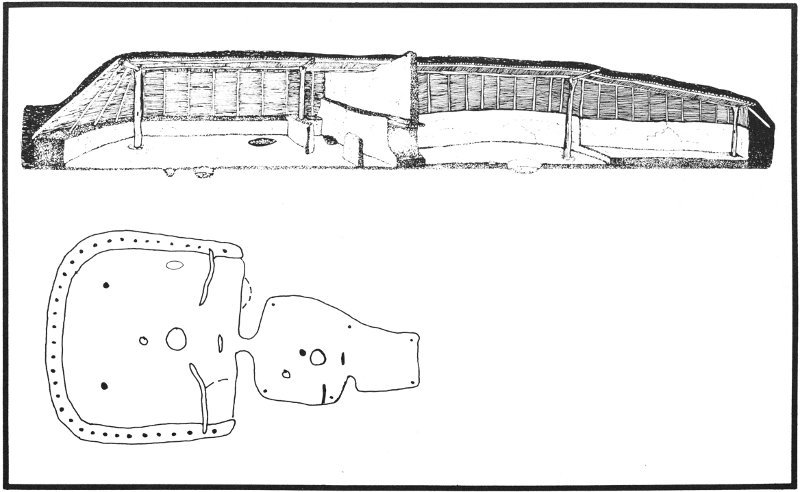
Early Anasazi peoples lived in semi-subterranean homes called “pithouses.”
The reconstruction (top) is based on the position of support post holes and other features on the floor plan (bottom).
Near the far wall of the house, archeologists found a large pit containing stones piled on a bed of sand. This was probably a heating pit. In the evening, stones would be heated in the hearth, then placed on the sand. They would radiate heat for several hours, warming the air near the floor where the people slept.
This small room is called an antechamber. It probably was used as a storage area and also as a passageway to and from the outside. At some point, this room was converted into another living area and equipped with a firepit, sipapu and antechamber of its own. The pithouse became a “duplex” housing two families, an unusual arrangement.

Turkey Vulture
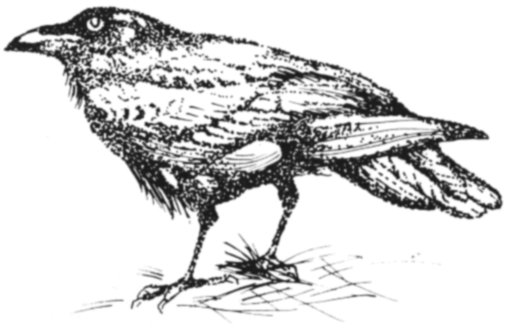
Common Raven
This dense pinyon-juniper forest indicates deep, well-watered soil. Some of the best farm land on the Mesa Verde was to be found here around Badger House Community. Today the Mesa Verde looks much as it did when the Anasazi arrived. The birds and mammals you may see during your walk—mule deer, ravens, turkey vultures, jays—would have been familiar to the prehistoric people. The conspicuous hills you will see in several places along the trail are anthills. Modern Pueblo potters sometimes collect the small pebbles from these nests to grind up and use as temper, the material added to pottery clay to prevent the vessels from cracking as they dry.
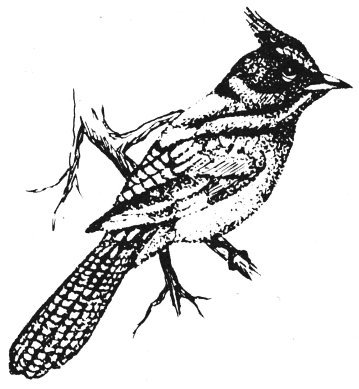
Steller’s Jay
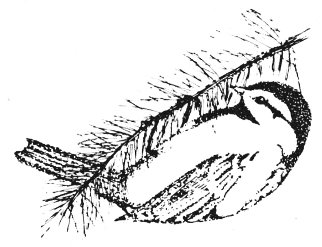
Mountain Chickadee
Beginning about 750, Anasazi living arrangements changed rapidly. The jacal storage rooms built near the pithouses grew into rooms of three-room apartments. The Anasazi probably used these as summer homes, then retreated into the better insulated pithouses with the coming of cold weather.
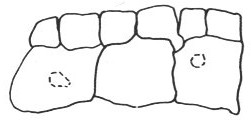
Plan of three-room apartments, AD 750.
The Anasazi occupied this site continuously for over 300 years. Archeologists know of several other room-blocks and a few pithouses in this area. This room-block was the last to be built.
The pattern seen here—a long arc of single-room houses—appeared after 800. Note the sunken floors.

Plan of early Pueblo, after AD 800.
These houses were built over shallow trenches. The walls were constructed using an interesting mixture of materials and techniques. Most were built of adobe, sometimes with stone slabs set upright along the base. Some were built of rough stones set in thick layers of mortar—the beginnings of true masonry, which the Anasazi would refine in the centuries to come.
Fire destroyed this entire block, and claimed a life. In one of these rooms, archeologists found the skeleton of an adult sprawled across the floor. An adobe wall had toppled onto the body, and it appeared that this person was overcome by flames before this hapless victim could escape the flames.
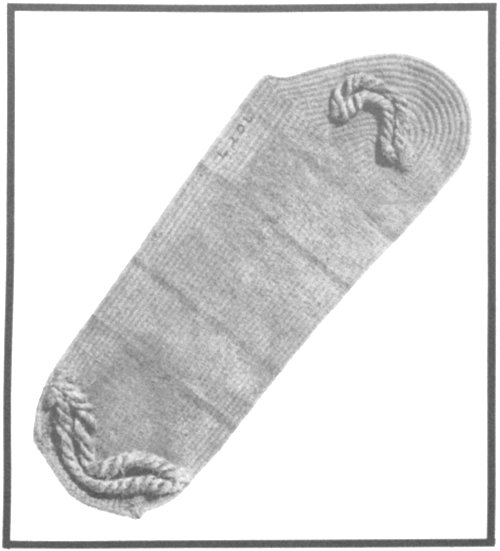
This large underground room was a great kiva or ceremonial chamber. Here, perhaps, people from this community and others nearby gathered for rituals marking events important in the lives of all, such as planting and harvest.
In this kiva, you will recognize a familiar combination of pithouse features: central hearth, bench, and postholes. Through time, the pithouse was devoted more and more to religious activities.
The history of this kiva can be read in the stratigraphy, or layers of colored soil, preserved in the earth opposite this stop. When the pit was dug, the soil was piled around the rim. At some point, fire destroyed part of the kiva roof. The rest was taken apart, the beams probably used elsewhere, and the kiva abandoned. Gradually the soil washed back over the rim and into the ruined structure. After a few feet of dirt had accumulated, people built fires in this area, leaving the dark charcoal stains. Finally the people filled the rest of the kiva with earth and trash and built houses on the fill.
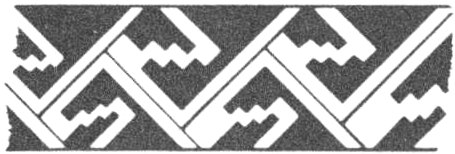
More towers have been found in the Mesa Verde-Montezuma Valley area than in any other part of the Southwest. Most of these were located near kivas, and many were connected to kivas by tunnels. This suggests that towers were important in Anasazi ceremonial life, but archeologists are not sure how. A tunnel extended 41 feet between a hatchway in the floor of this tower and an opening in the wall of a kiva at the far end of Badger House. This is the longest kiva-tower tunnel yet discovered in the Southwest. The tunnel was built by digging a trench which was then roofed with poles, brush and earth. When the kiva burned, the entrances at both ends of the tunnel were open. Flames were drawn through the tunnel some 20 feet towards the tower, charring the roof.
This site was first occupied from about 900 through 1100. People returned in the 1200’s, built the kiva and tower and a room-block, but soon after abandoned the site for good.
The earliest houses here were so disturbed by later construction that archeologists could not get a clear idea of their number or extent.

Badger House as it may have appeared in the 1200’s.
The ruins exhibited here are the remains of two room blocks built at different times, one partially over the rubble of the other. The lower foundations date from about 1000-1100, the upper from the late 1250’s.
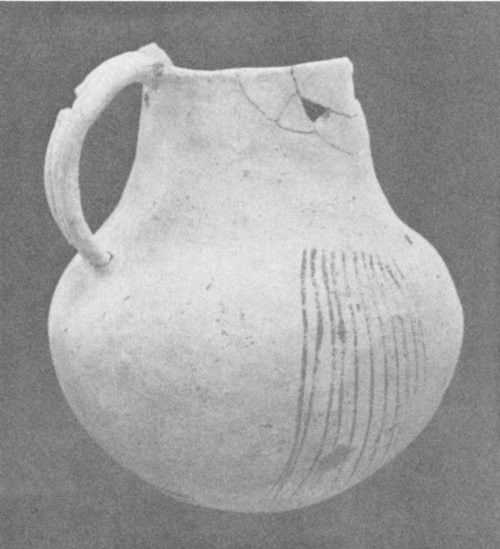
Compare the changes in masonry that took place over this time span. The walls of the earlier rooms are only one-stone wide. Except for the chipping along the edges—a technique sometimes called “scabbling”—the stones were left rough. The walls of the later rooms, however, were built of two parallel rows of stone and the space between them packed with earth and rocks. The stones themselves were finished by pecking, similar to those you will see in the walls of the small kiva at the next stop.
An earth-filled bench was built at one end of each of the later rooms. These may have been sleeping platforms, raised to avoid drafts and the cold air that settled near the floors overnight.
No roofing timbers were found in this room-block. Archeologists believe that when the Anasazi abandoned this site they took much of Badger House with them. Stones and beams from these rooms probably found a place in the walls and roofs of Wetherill Mesa cliff dwellings.
After about 900, Mesa Verde communities were dotted with kivas like this one. Small kivas probably were used by several related families or by secret religious societies 11 whose members specialized in performing certain types of ceremonies. The roof was at ground surface. Kiva roofs were supported by an ingenious cribbed framework of logs. The ends of the logs rested on the pilasters or columns along the kiva wall. Note the large rectangular pit or vault in the floor. The ends of this vault were stepped and supported a plank hewn from ponderosa pine. Archeologists believe that this was used as a drum.

WETHERILL MESA ARCHEOLOGICAL PROJECT
Between 1958 and 1964, archeological crews excavated in several sites on Wetherill Mesa. This work was funded by the National Geographic Society and the National Park Service. At the time, the Wetherill Mesa Project was among the largest “digs” ever undertaken in the United States. A number of different fields participated, including botanists, zoologists, and geologists. All applied their special skills in this effort to better understand the world of the prehistoric peoples of the Mesa Verde.
Around 1200, most of the Mesa Verde Anasazi abandoned their homes on the mesa tops and settled in the alcoves or overhangs along the canyon walls. Some people continued to live—or at least to use ceremonial sites—on the mesa tops, however. Archeologists are virtually certain that the tower, kiva, and last block of rooms at Badger House were built in 1258.
Archeology can tell us much about how human activities alter the natural environment. Consider this tale of two rabbits:
When the Anasazi settled on the Mesa Verde, it looked much as it does today. Cottontails are now very common in the mesas while jackrabbits are rare. Yet the animal bone recovered from sites like Badger House included as much jackrabbit as cottontail.
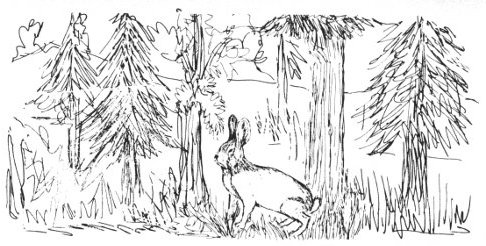
Cottontail
In clearing land for farming, the Anasazi converted areas of the mesa tops into the sort of open habitat jackrabbits favor. The species moved into these areas and multiplied quickly. After the Anasazi abandoned Mesa Verde, the brush and forest grew over the former cornfields. As the brush returned, so did the cottontails—and the jackrabbits retreated to the open country of the Montezuma Valley, where they are common today.
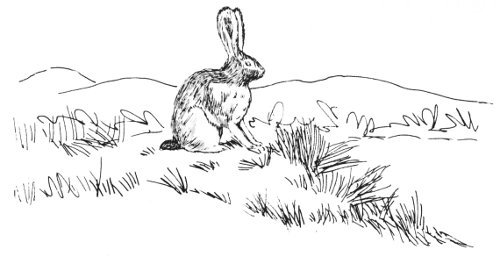
Jackrabbit
The Anasazi occupied this site at various times from the 900’s into the 1100’s. They left behind some unusual and puzzling architectural features....
The sides and floor of this pit were fire-reddened, and archeologists believe it was used as an oven. Food probably was placed on a bed of hot stones, covered with earth, and allowed to bake for several hours.
This small underground room was among the last structures built on this site. Archeologists do not know its purpose, but it resembles a miniature kiva.
The last building on this site was a small pueblo. From the time the Anasazi began to live in above-ground dwellings, their villages usually included open courtyards or plazas. The kivas were located in this area. Modern Pueblo Indians use the plaza as a work area, a place to socialize, and a stage for the dances that are often a part of religious ceremonies.

The palisade was built of upright poles, with branches probably woven between them.
A palisade, or fence of posts and brush, partially enclosed the plaza of Two Raven House. Archeologists 14 speculate that such structures may have been windbreaks to shelter the plaza or even barriers to keep Anasazi turkeys in (or out) of the village. Although palisades have been discovered at only a few other sites in the Southwest, they may have been common features of Anasazi villages. Archeologists seldom have the time (or money) to spend stripping away the topsoil in search of the telltale rows of postholes.
Between 1280 and 1300, the Anasazi left Mesa Verde and moved south. Some of the people may have joined the Hopi in northern Arizona, but most probably settled among the Pueblos in the Rio Grande Valley of New Mexico. Archeologists are still not certain why the Anasazi abandoned much of their homeland at this time.
Drought conditions, which began around 1276 and persisted for nearly a generation, may have been partly to blame. Yet, the Anasazi had survived several previous droughts. By 1280, however, the people may have been facing other serious problems in their environment, including exhausted soil and erosion.
Even after a century of research, mysteries remain....
These stones are the remains of toppled walls. They were removed from in and around the rooms during excavation.
A key ingredient in making a house into a ruin is neglect. Nature does the rest. Walls and roofs of abandoned houses sag and fall. Soil, moved by water and wind, builds up against the foundations. Plants with shallow roots sprout, anchoring the soil, which eventually becomes deep enough to support brush cover. Given time, the result is a mound—one littered with lichen-covered stones, pot sherds, flakes of stone and mortar, but otherwise nearly blending into the landscape. You may have wondered how archeologists estimate the height of walls when so few are left standing. The answer lies here. They collect the debris and measure the pile.
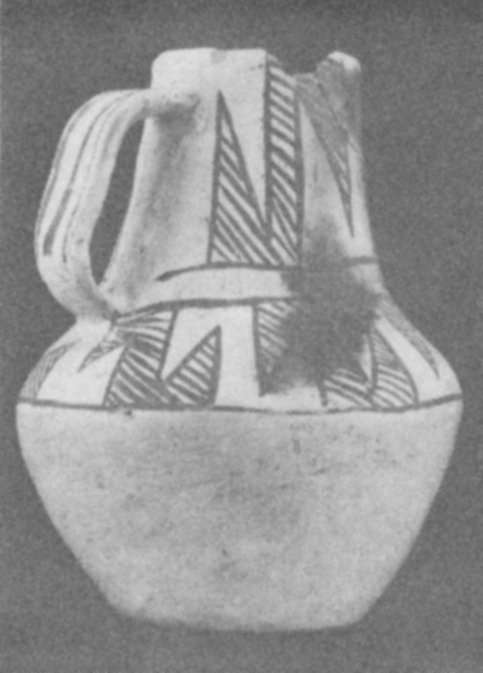
The following information will help you plan your visit to Wetherill Mesa. The road to Wetherill is open from 8:00 a.m. to 4:30 p.m. The 12-mile, 30/45 minute drive offers a number of excellent views of the Park and Four Corners.
NOTE: Vehicles in excess of 8,000 G.V.W. and/or 25 feet in length are prohibited.
Wetherill Mesa offers a variety of sights, from cliff dwellings to mesa top ruins. From the parking area, walk to the information kiosk and mini-train loading area. There the Ranger will help you plan your visit to the ruins.
Step House Ruin: The ½-mile self-guided walk takes 45 minutes to complete. Guidebooks are available on the trail to the ruin. A Ranger is on duty in the dwelling to answer any questions. This ruin may be visited anytime between 9:15 a.m. and 5:15 p.m.

Departs from the kiosk area every ½-hour from 9:00 a.m. to 5:00 p.m. There may be an hour wait for tours. You must ride the mini-train to visit:
Long House: This Ranger guided tour of the Park’s second largest dwelling leaves every ½-hour from 9:00 a.m. to 5:00 p.m. at the trail head. The total round trip walking distance is ½-mile and takes approximately one hour.
Note: Tours are limited to 50 people on a first come, first served basis. This tour is not recommended for those with a heart condition. Last tour to Long House leaves from the kiosk at 5:00 p.m.
Badger House Community: This ¾-mile self-guided trail will take you to four mesa top ruins.
Guidebooks are available at the beginning of the trail and a Ranger will be roving the trail in order to answer any questions or provide assistance. This ruin may be visited anytime between 9:45 a.m. and 5:30 p.m. Visitors taking the 5:00 p.m. tour (last tour) to Long House will not be able to visit Badger House or Step House.
Two Overlooks: Kodak viewpoint and Long House viewpoint.
NOTICE: The mini-train and most trails are accessible by wheelchair.
The ARA (concessioner) van departs from Far View Lodge at 9:30 a.m.
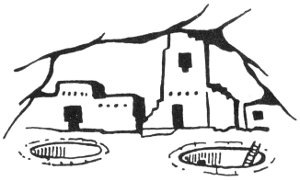

WETHERILL MESA

This booklet was published by the
MESA VERDE MUSEUM ASSOCIATION, INC.
(No government funds were expended)
FOR YOUR SAFETY
Do not allow your visit to be spoiled by an accident. Efforts have been made to provide for your safety and comfort. Warning signs are placed among the ruins and along trails and walls, but there are still hazards that require your alertness and vigilance. Please exercise common sense and caution.
HELP US PROTECT THIS NATIONAL PARK
Please leave plants, animals, rocks and other natural and manmade features undisturbed. Under the 1906 Federal Antiquities Act and the Archeological Resource Protection Act of 1979, it is unlawful to appropriate, excavate, injure, or destroy any historic or prehistoric ruin or any object of antiquity on federal lands.